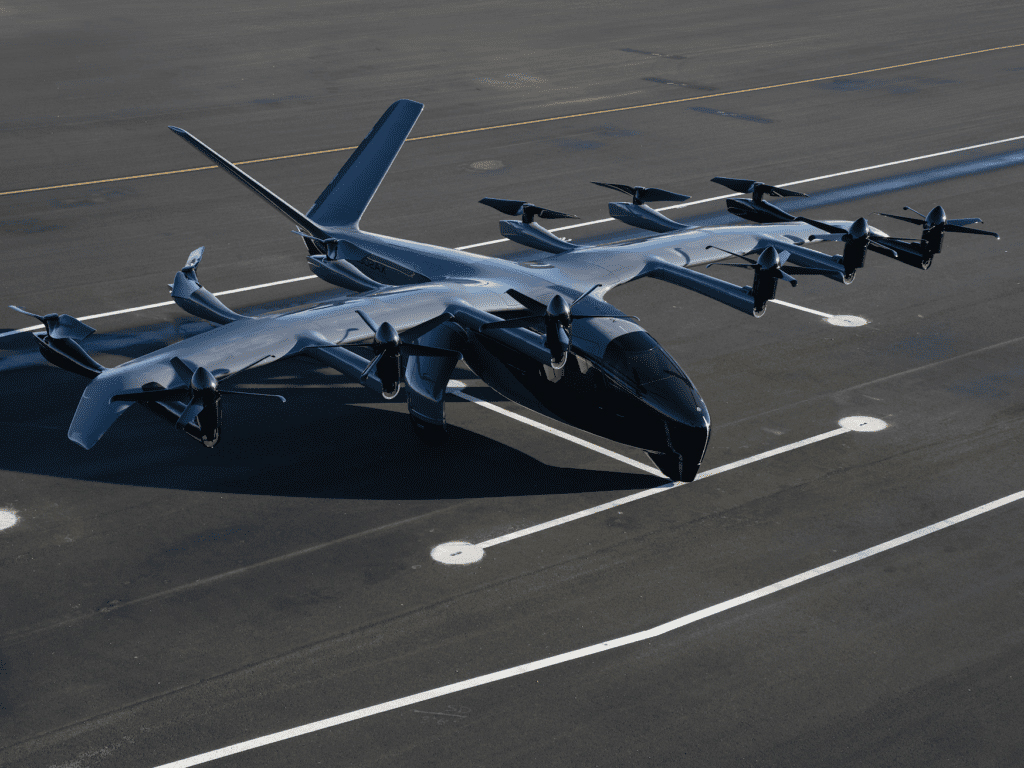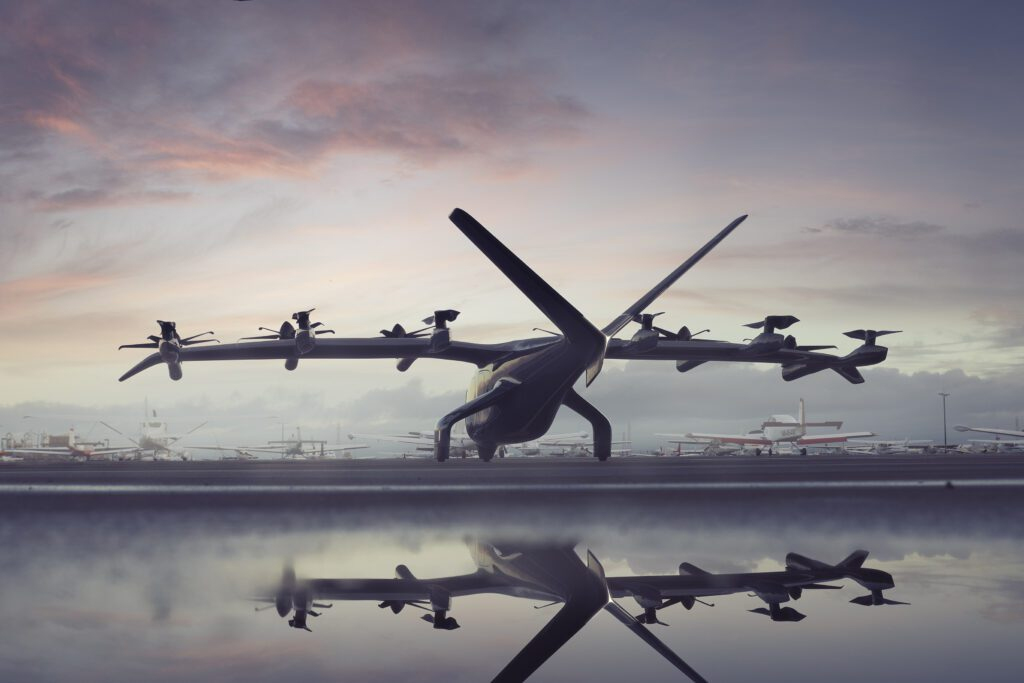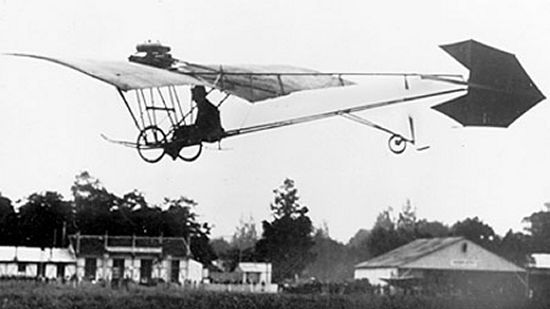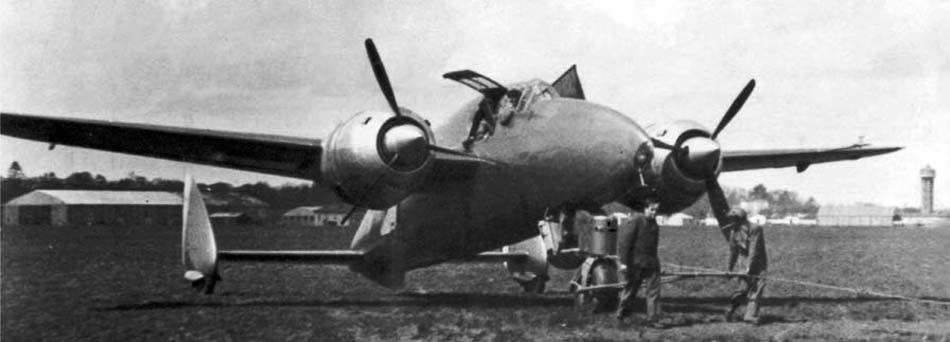Stellantis to Build Air Taxis — Harken Back to Citroën’s Aviation History…

At CES in Las Vegas yesterday, Stellantis announced it will manufacture an electric air taxi with Archer Aviation — one of several eVTOL companies nearing commercialization. It also plans to invest $150 million US in Archer, following an initial $75 million investment in 2021.
Stellantis has been a strategic partner to Archer since 2020 through various collaboration initiatives, whereby Archer has leveraged Stellantis‘ deep manufacturing, supply chain, and design expertise in connection with Archer’s efforts to design, develop, and commercialize its eVTOL aircraft.
But did you know that aviation investment within Stellantis can be traced back through Citroën to the mid ’70s and actually back to pre-WWII?
Back as far as 1922 with Citroën’s buy-out of the Clément-Bayard company Citroën inherited an already budding history of building airplanes like the Demoiselle No 19 (the world’s first series production aircraft) and the No 20 that was exhibited on the Clément-Bayard stand at the Paris Aéro Salon in October 1909.
In 1939 Citroën, under president at the time Pierre-Jules Boulanger, a decorated World War I airman and aviation enthusiast, had primed its Levallois-Perret factory and began tooling up for production of the SNCASE (Société Nationale de Constructions Aéronautiques de Sud-Est) SE-100, a French two-seat, twin-engined fighter.
Unfortunately production efforts came to an end when, in June 1940, the French capitulated.
In the 70’s Citroën wanted to diversify its business and manufacture something that would be used as a marketing tool as well. This time their aviation effort was a helicopter called the RE-2. The idea behind it was to compete with the American-made Bell 47, which was widely used in France.
The RE-2 produced between 170 and 190 hp, depending on fuel and setup. The engine was the same as in the GS Birotor car introduced in 1973, an ill-fated but innovative project with only 850 units sold. However, the helicopter used larger Wankel rotors in the engine and it was equipped with fuel injection.
Weighing 700 kilograms (1543 lbs) when empty, it could reach a top speed of 205 km/h (127 mph) and had a maximum range of 430 km (267 miles).
Work began in 1973 and only two years later, the first prototype was airborne. After many months of development, the RE-2 obtained a temporary flight permit from the French government. Eventually, Citroën stopped rotary engine development and with just 38 test flights completed, their helicopter project was also scrapped. The RE-2 made its last flight in May 1979, after which it was relegated to the Citroën Conservatoire.
(A full history of Clément-Bayard, the development of the SE-100 and the RE-2 can be found in the Citroën Classic owners’ Club of Australia magazine — Volume 3 2022_23 #3.)
With Stellantis’ investment, by the end of 2024 Archer plans to have their Midnight eVTOL model rolling off their production line. It will be able to carry four passengers and a pilot with a range of 100 miles (161 km) though it is designed for back-to-back short distance trips of around 20 miles, with a charging time of approximately 10 minutes in-between.




“The goal is for Stellantis to mass produce Archer’s eVTOL aircraft as its exclusive contract manufacturer,” the companies said in a joint statement.
Stellantis will provide up to $150 million in equity capital for potential draw by Archer at its discretion in 2023 and 2024, subject to achievement of certain business milestones. Stellantis said it will also increase its existing stake in Archer through stock purchases in the open market.
“These actions, along with the other elements of this expanded partnership, will enable Stellantis to become a long-term, cornerstone investor in Archer,” the companies said.
The company previously developed a demonstrator aircraft, called Maker, to test out the configuration and functionality of its electric vertical take-off and landing (eVTOL) concept.
In November 2022 Archer announced its first Midnight eVTOL route in partnership with United Airlines. The route will take passengers to and from Newark Airport and a heliport in downtown Manhattan. “That’s a really critical key hub for United, and it’s a route that a lot of people take every day,” said Archer’s CEO and founder, Adam Goldstein.
Other eVTOL ventures involving the car industry include a collaboration between Hyundai Motor Group’s air taxi unit and aerospace supplier Honeywell International to develop avionics systems.The auto industry is well ahead in battery design but the weight of current-generation batteries is seen as a limiting factor for the range and payload of the new vehicles.
In November, European plane maker Airbus forged a partnership with French carmaker Renault to develop a new generation of electric batteries and hybrid technology for cars and planes. “For the first time, two European leaders from different industries are sharing engineering knowledge to shape the future of hybrid-electric aircraft,” said Gilles Le Borgne, EVP, Engineering, Renault Group.
Update — March 19, 2024:
Stellantis announced today that it has increased its investment in Archer Aviation with the purchase of 8.3 million shares of Archer’s stock, signaling Stellantis’ continued confidence in Archer’s plans to bring electric vertical take-off and landing (eVTOL) aircraft to market beginning in 2025.
Stellantis’ increased investment in Archer follows CEO Carlos Tavares’ recent visit to Archer’s headquarters and manufacturing facilities in Santa Clara, California.
The construction on the first phase of Archer’s high-volume manufacturing facility in Georgia remains on track to be completed later this year. The first phase is a build out of-350,000 square feet on a 100 acre site designed to support production of up to 650 aircraft annually, which would make it one of the largest manufacturing facilities by volume in the aircraft industry.






Citroën air taxi – sounds familiar – from “Back to the Future 2.”